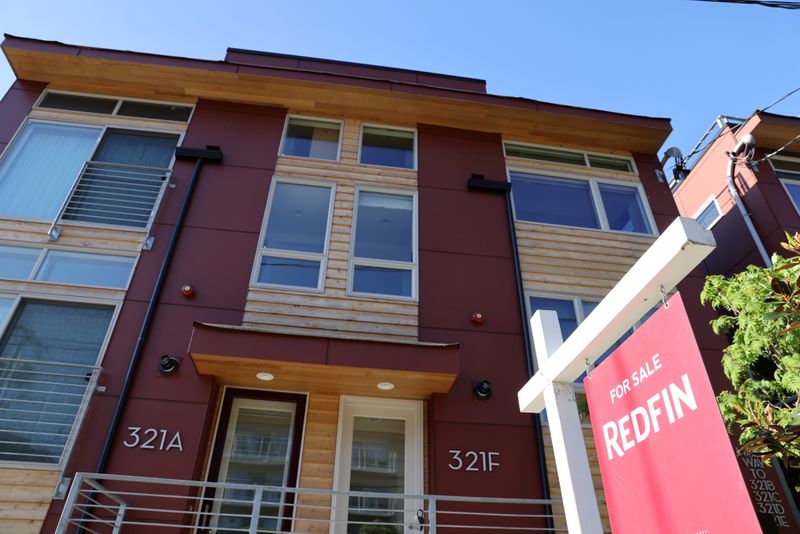WASHINGTON(Reuters) - U.S. home sales surged to an eight-month high September, but higher prices as supply remains tight are squeezing out first-time buyers from the housing market.
Existing home sales increased by 7.0% - the largest increase in a year - to a seasonally adjusted annual rate of 6.29 million units last month, the highest level since January, the National Association of Realtors said on Thursday. Economists polled by Reuters had forecast sales rising to a rate of 6.09 million units. Sales rose in all four regions.
Home resales, which account for the bulk of U.S. home sales, dropped 2.3% on a year-on-year basis.
Demand for housing surged early in the coronavirus pandemic amid an exodus from cities to suburbs and other low-density locations as Americans sought more spacious accommodations for home offices and online schooling. The buying frenzy has abated as workers return to offices and schools reopened for in-person learning, thanks to COVID-19 vaccinations.
Though house price growth appears to be slowing amid an ebb in bidding wars, it remains strong. The median existing house price increased 13.3% from a year ago to $352,800 in September. That was the smallest gain this year. The moderation in house price inflation was because more smaller homes were sold last month. First-time buyers accounted for 28% of sales, the smallest share since July 2015, and down from 31% a year ago.
The Federal Reserve's Beige Book report of anecdotal information on business activity collected from contacts nationwide on or before October 8 that was published on Wednesday said "residential real estate activity was unchanged or slowed slightly but the market remained healthy, overall."

There were 1.27 million previously owned homes on the market last month, down 0.8% from August and 13% from a year ago. There is a huge backlog of houses that are yet to be built because of shortages of inputs and labor. That could boost housing inventory when the supply constraints ease.
At September's sales pace, it would take 2.4 months to exhaust the current inventory, down from 2.7 months a year ago. A six-to-seven-month supply is viewed as a healthy balance between supply and demand.
